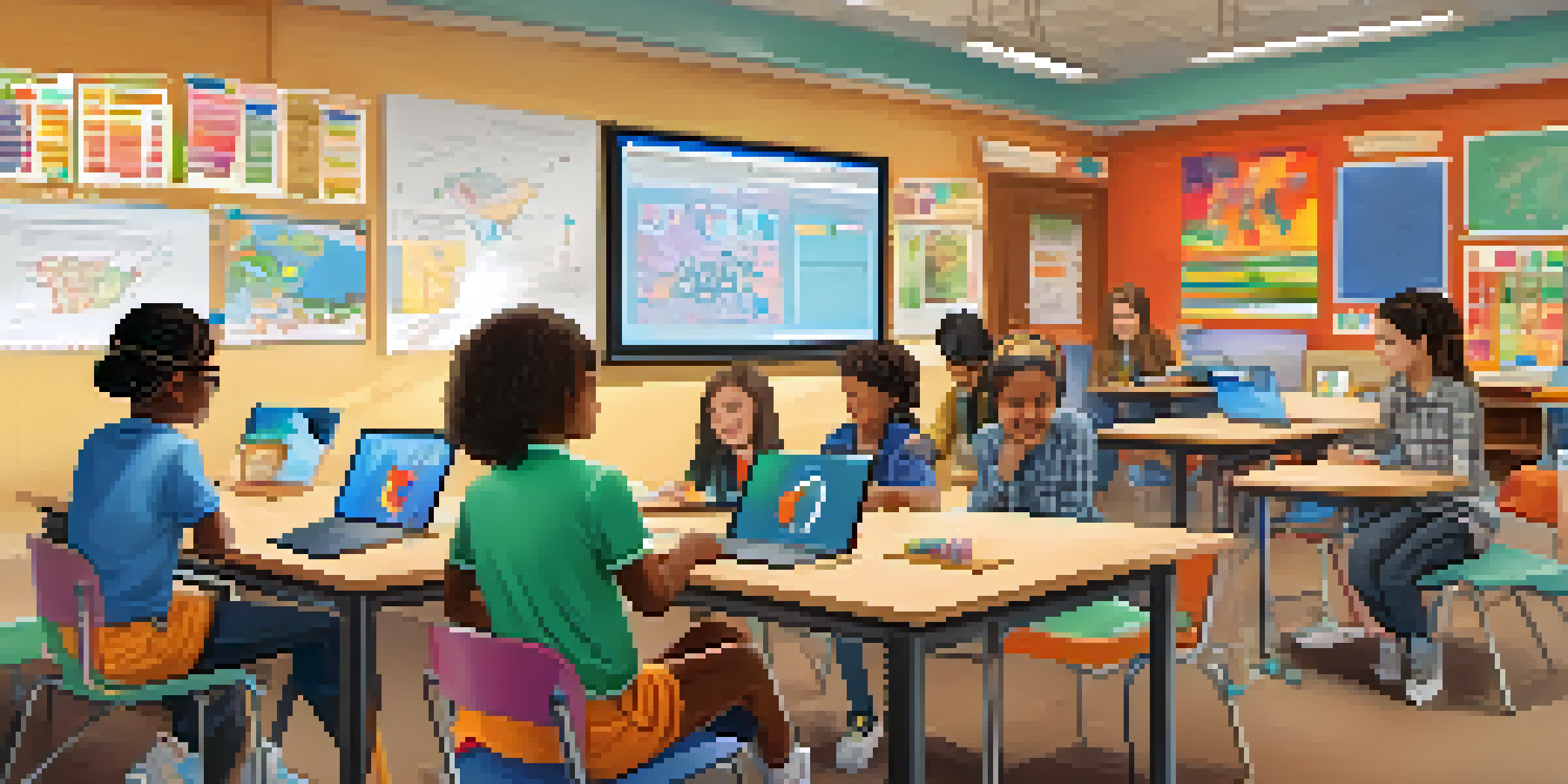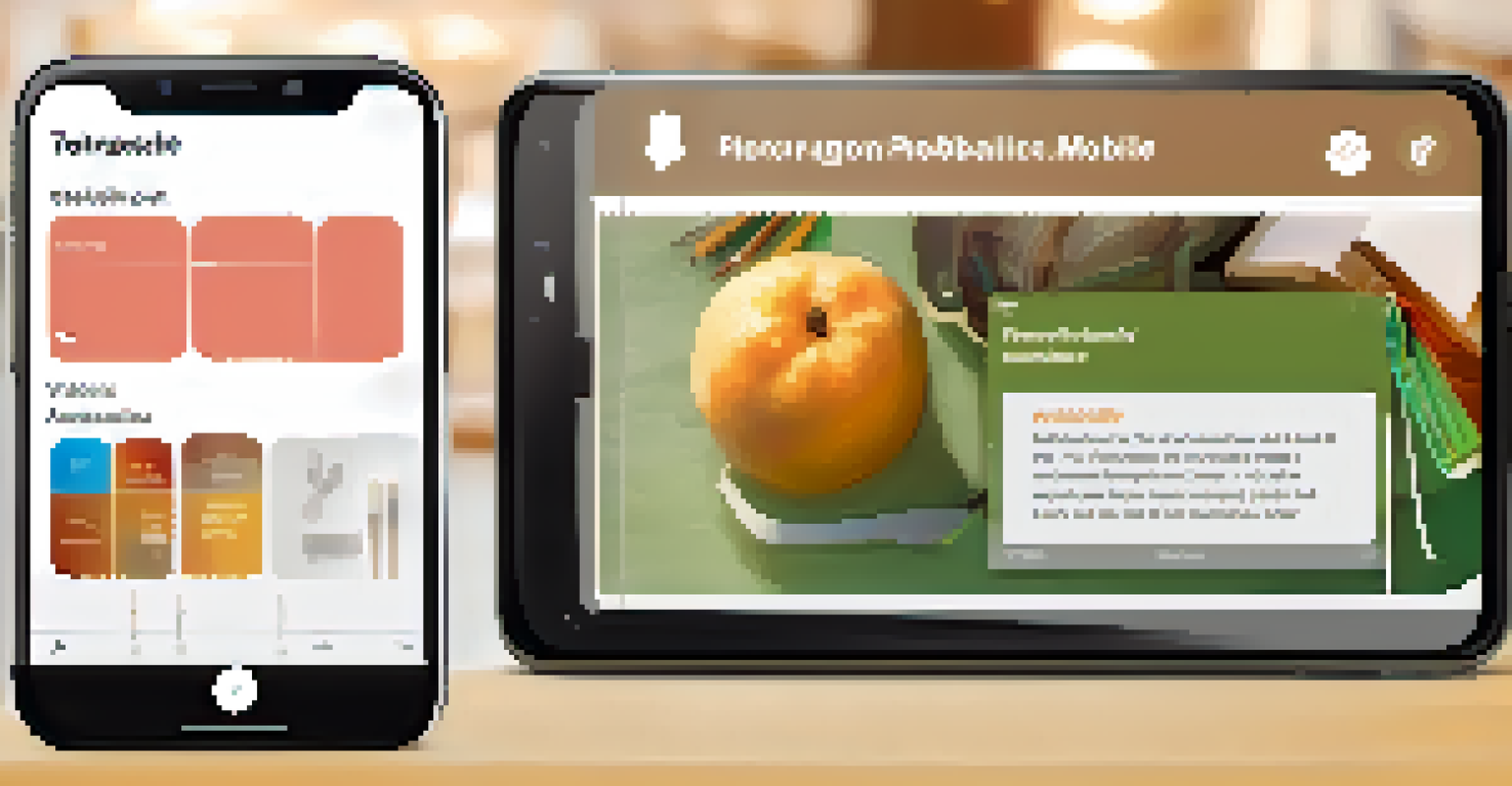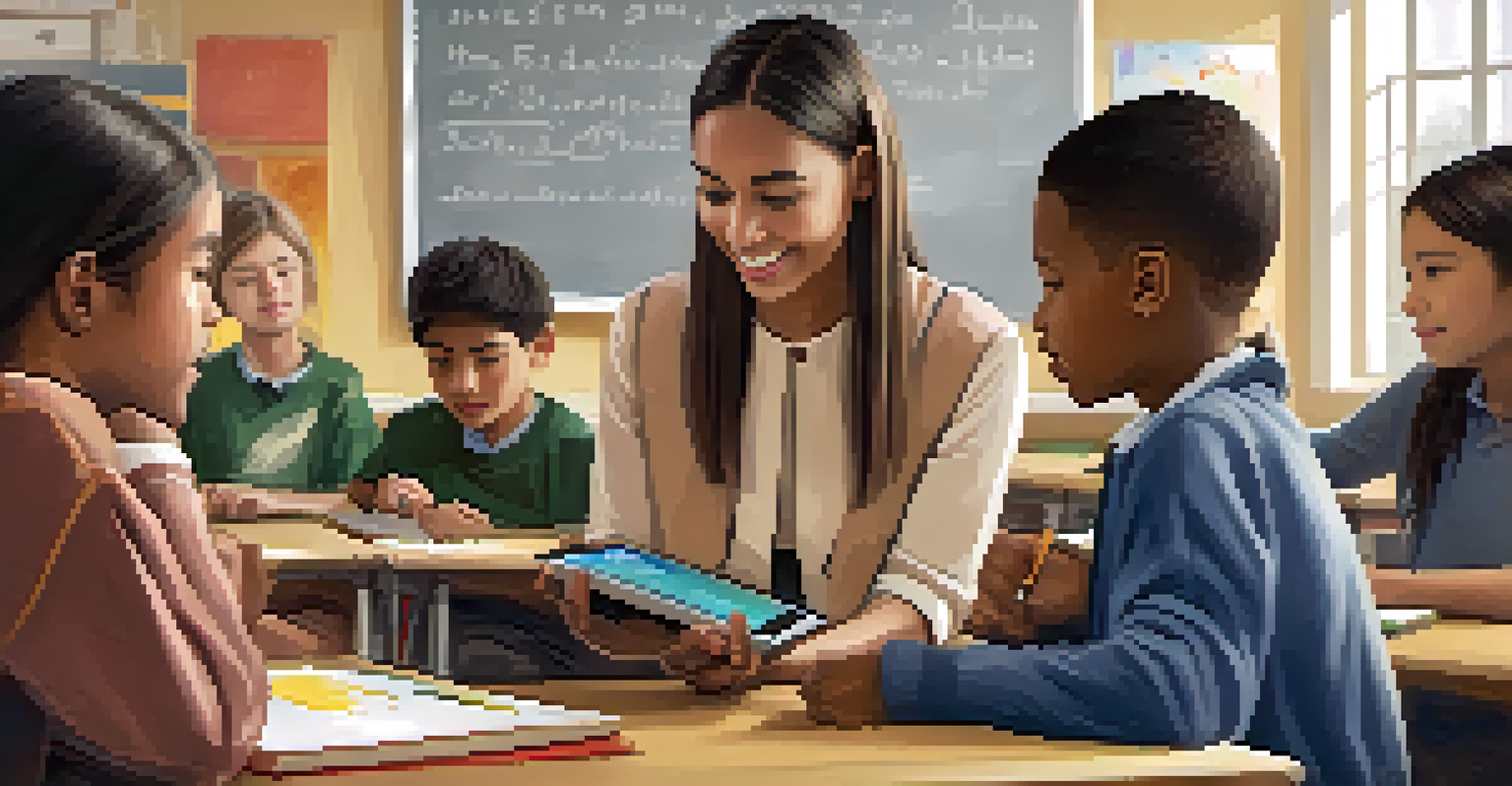Mobile Technology as a Tool for Inclusive Education Solutions

Understanding Inclusive Education and Its Importance
Inclusive education is about ensuring that all students, regardless of their abilities or backgrounds, have access to quality learning experiences. This approach not only benefits those with disabilities but enriches the educational landscape for everyone. By embracing diversity, schools can foster a more empathetic and collaborative environment, preparing students for a global society.
Inclusive education is not just about placing students with disabilities in general education classrooms, it's about creating a culture of belonging and support for all learners.
Inclusion promotes a sense of belonging, which is crucial for student engagement and success. When students learn together, they develop essential social skills and a deeper understanding of different perspectives. This collaborative setting helps break down stereotypes and encourages acceptance among peers.
Ultimately, inclusive education supports the idea that every learner has unique strengths and challenges. It recognizes that traditional teaching methods may not work for everyone, paving the way for innovative solutions that cater to diverse needs. Mobile technology emerges as a powerful ally in making this vision a reality.
Mobile Technology: A Game Changer for Education
Mobile technology has transformed how we access information and communicate, and education is no exception. With smartphones and tablets becoming ubiquitous, they serve as valuable tools for learners and educators alike. This shift allows for personalized learning experiences that can adapt to individual needs, fostering engagement and retention.

For instance, educational apps can provide tailored content, quizzes, and interactive lessons that cater to diverse learning styles. Students can learn at their own pace, revisiting challenging concepts whenever necessary. This flexibility is particularly beneficial for those with learning disabilities or language barriers.
Inclusive Education Benefits Everyone
Inclusive education fosters a sense of belonging and collaboration, enhancing learning experiences for all students.
Moreover, mobile technology facilitates communication between teachers, students, and parents, creating a supportive learning environment. By keeping everyone connected, it ensures that students receive the encouragement and resources they need to thrive academically.
Enhancing Accessibility Through Mobile Apps
Accessibility is a cornerstone of inclusive education, and mobile apps play a vital role in making learning materials available to all. From screen readers for visually impaired students to speech-to-text applications for those with hearing difficulties, these tools are designed to bridge gaps in traditional learning methods. They can transform the way students interact with content, making it more engaging and easier to understand.
Technology is best when it brings people together.
For example, a student with dyslexia might struggle with reading standard texts, but an app that converts text to audio can help them access the same material in a more manageable format. This approach not only boosts confidence but also empowers learners to take charge of their education.
As developers continue to innovate, the range of accessible apps continues to expand. This evolution ensures that educational resources are not just available but also usable for every student, regardless of their specific needs.
Fostering Collaboration with Mobile Technology
Collaboration is essential in any learning environment, and mobile technology enhances this aspect significantly. Through various platforms, students can work together on projects, share resources, and provide feedback to one another, regardless of their physical location. This connectivity encourages peer learning and the exchange of ideas, which can lead to richer educational experiences.
For instance, group projects can be managed through collaborative apps, allowing students to contribute their unique skills and perspectives. This not only helps them learn from each other but also builds essential teamwork skills that are valuable in the workforce.
Mobile Tech Enhances Learning Access
Mobile technology provides personalized learning opportunities and essential tools that cater to diverse student needs.
Furthermore, teachers can use mobile technology to facilitate group discussions and activities, ensuring that every student has a voice in the learning process. By promoting a culture of collaboration, mobile tools help create a sense of community in the classroom.
Bridging the Digital Divide with Mobile Technology
While mobile technology offers numerous advantages, it also highlights the existing digital divide that can hinder inclusive education. Not all students have equal access to devices or reliable internet connections, which can exacerbate educational inequities. Addressing this divide is crucial to ensure that all students can benefit from mobile learning opportunities.
Many initiatives aim to provide low-cost devices and internet access to underserved communities. By bridging this gap, we can empower every student to engage with educational content and participate in collaborative learning experiences. Schools and organizations are increasingly working together to create programs that promote digital literacy and access.
As we strive for a more inclusive educational landscape, it’s essential to consider the barriers that some students face. By investing in resources and infrastructure, we can ensure that mobile technology serves as an equalizer in education, rather than a source of disparity.
Teacher Training: Key to Successful Integration
Integrating mobile technology into the classroom goes beyond just providing devices; it also requires adequate training for educators. Teachers must be equipped with the skills and knowledge to effectively use these tools to enhance learning experiences. Professional development programs focused on mobile technology can empower teachers to explore innovative teaching methods that cater to diverse learning needs.
For example, workshops can demonstrate how to leverage educational apps, use mobile devices for assessments, and encourage interactive learning. When teachers feel confident in their ability to incorporate technology, they can create more engaging and effective lessons that resonate with all students.
Bridging the Digital Divide Matters
Addressing the digital divide is crucial to ensure equitable access to mobile learning resources for all students.
Moreover, ongoing support and resources are essential as technology continues to evolve. By fostering a culture of continuous learning among educators, we can ensure that mobile technology is utilized to its fullest potential in promoting inclusive education.
The Future of Inclusive Education with Mobile Technology
As we look ahead, the potential for mobile technology to enhance inclusive education is vast. With advancements in artificial intelligence, augmented reality, and virtual classrooms, the possibilities for personalized and accessible learning experiences are expanding. These innovations can further break down barriers, allowing every student to thrive in their educational journey.
Imagine a future where students with disabilities can participate in virtual field trips or collaborate with peers from around the world in real-time. Such experiences can enrich learning and provide opportunities that were previously unimaginable. Mobile technology is at the forefront of this transformation, making education more inclusive and engaging.

However, it is crucial to approach these advancements thoughtfully, ensuring that equity and accessibility remain at the core of our efforts. By keeping the focus on inclusivity, we can harness the full potential of mobile technology to create a brighter future for all learners.